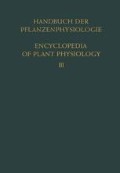Abstract
The molecules of all substances are in motion and possess free (kinetic) energy. From the laws of thermodynamics, if the molecules of any one substance possess more aggregate free energy per unit volume in one region of a medium than in

Diffusion of a substance across a membrane from a region of higher concentration to one of lower concentration (from Scarth and Lloyd).
another, there will be a tendency for a transfer of some of the energy. This may be by collision or by a net movement of molecules. The net movement of molecules is known as diffusion (Getman and Daniels, Scarth and Lloyd. The greater free energy or activity may be due to 1. a higher concentration of molecules of the same average free energy or 2. a greater average free energy of the molecules (i.e. a higher temperature), or to both factors.
Access this chapter
Tax calculation will be finalised at checkout
Purchases are for personal use only
Preview
Unable to display preview. Download preview PDF.
Literatur
Brooks, S. C., and M. M. Brooks: The permeability of living cells. Protoplasma-Monogr. 19 (1941).
Davson, H., and J. F. Danielli: The permeability of natural membranes, Cambridge: Univ. Press 1943.
Getman, F. H., and F.Daniels: Outlines of theoretical chemistry. New York: John Wiley & Sons 1937.
Harris, J. A.: Phvsico-chemical properties of plant saps. Univ. of Minnesota Press 1934.
Killian, C., et G. Lemée: Étude sociologique, morphologique et écologique de quelques halophytes sahariens. Rev. gén. Bot. 55, 374–402 (1948); 56, 28–48 (1949).
Levitt, J.: The osmotic equivalent and osmotic potential difference of plant cells. Physiol. Plantarum 4, 446–448 (1951).
Levitt, J.: Further remarks on the thermodynamics of active (non-osmotic) water absorption. Physiol. Plantarum 6, 240–252 (1953).
Overstreet, R., and L. Jacobson: Mechanisms of ion absorption bv roots. Annual Rev. Plant Physiol. 3, 189–206 (1952).
Scarth, G. W., and F. E. Lloyd: An elementary course in general physiology. New York: John Wiley & Sons 1930.
Editor information
Editors and Affiliations
Rights and permissions
Copyright information
© 1956 Springer-Verlag OHG. Berlin · Göttingen · Heidelberg
About this chapter
Cite this chapter
Levitt, J. (1956). Osmosis and permeability. In: Adriani, M.J., et al. Pflanze und Wasser / Water Relations of Plants. Handbuch der Pflanzenphysiologie / Encyclopedia of Plant Physiology, vol 3. Springer, Berlin, Heidelberg. https://doi.org/10.1007/978-3-642-94678-3_4
Download citation
DOI: https://doi.org/10.1007/978-3-642-94678-3_4
Publisher Name: Springer, Berlin, Heidelberg
Print ISBN: 978-3-642-94679-0
Online ISBN: 978-3-642-94678-3
eBook Packages: Springer Book Archive

